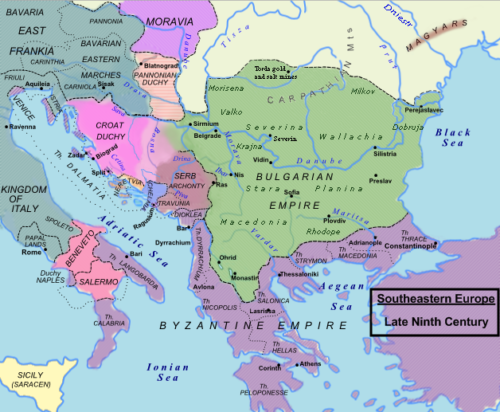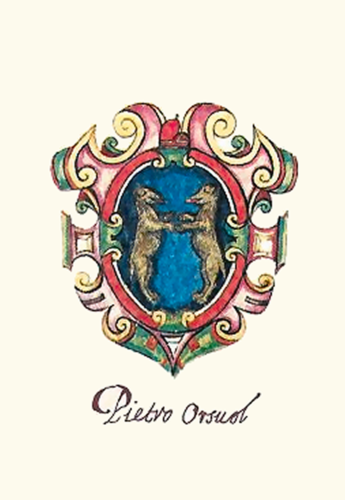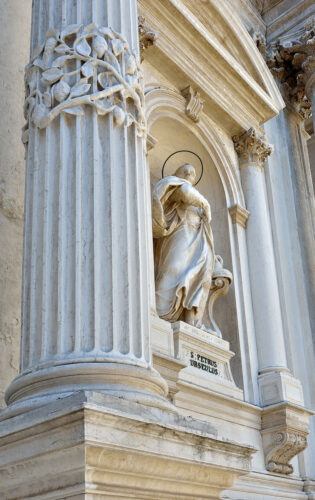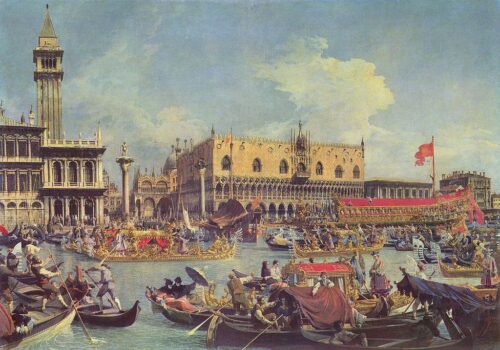Puberty
The region became officially independent after the year 840 with the bull of Emperor Lothair I who recognized Venice’s authority over the lagoon. The region’s autonomy had already been accepted by the Byzantine Empire so the fledging city state started to claim its naval supremacy in the Adriatic sea with constant fighting against Slavic and Saracen pirates who had been a constant fear in Adriatic waters up to that point in time. The struggle for superiority was not easy with the biggest Venetian foe being the Narentines, a South Slavic tribe of pirates that had raided several Venetian ships and had slaughtered their crews during the 9th century. In 948 Doge Pietro III Candiano led a fleet of 33 Venetian galleys to punish the Dalmatian pirates for their repeated raids. His unsuccessful expedition led to a peace treaty that forced Serenissima Repubblica di Venezia (Most Serene Republic of Venice) to pay taxes to the Narentines for safe passage for the next 50 years.


Pietro III‘s efforts to establish a hereditary monarchy in Venice enraged its people who tried to assassinate him during a popular assembly. His son Pietro IV Candiano intervened and managed to save his father’s life who was thenceforth exiled. A few years later Pietro III returned leading an army given to him by the King of Italy. The son, who was at the head of a band of defenders would win the father and would be elected doge soon after. Pietro IV proved to be even more ambitious than his father especially after his marriage to the wealthy noblewoman Waldrada of Tuscany, relative to the Emperor Otto I, who in 967, renewed several commercial privileges, for the Venetians. Waldrada who had brought Pietro IV a large dowry including the possession of Treviso, Friuli, and Ferrara regions, quickly became unpopular in Venice because of her Queen-like behavior. Nevertheless her introduction of bull fighting in Venice, at which she herself presided, became very popular. In 976, three years after Emperor Otto I‘s death, who based on the events that followed, played the role of the protector for the family, the Venetians found their opportunity to depose Pietro IV. They went a step further by locking him in the ducal palace and setting it on fire. The doge and his son were killed but Waldrada with her daughter were spared. The fire however spread quickly burning down a greater part of the city, including the church of San Marco. The man leading the insurrection Pietro I Orseolo was elected as his successor. The new doge began the rebuilding of St. Mark’s Basilica and the ducal palace and arranged for an inheritance for Waldrada in order not to provoke the retaliation of the new emperor. He would unexpectedly resign after a term of only two years that stood out for his many charities, to become a monk in a Benedictine Abbey in Southern France. After some years he left the monastery to become a hermit and is venerated by the Roman Catholic Church as St. Pietro Orseolo since 1731.



A whole new chapter opened for Venice during the term of Pietro II Orseolo who managed to crush the Dalmatian pirates and free the city from the 50-year-old taxation to the Narentines on Ascension Day in 998. The Venetian fleet scorched the entire eastern half of the Adriatic coast, the Dalmatian city-states were subdued and the doge acquired the title of Dux Dalmatianorum (Duke of the Dalmatians). In honor of the decisive victory the Venetians instituted a ceremony which would evolve into the Sposalizio del mar (Marriage of the Sea), or the Festa della Sensa, the Ascension Festival, the oldest festival in Venice which was celebrated each year on Ascension Day.



